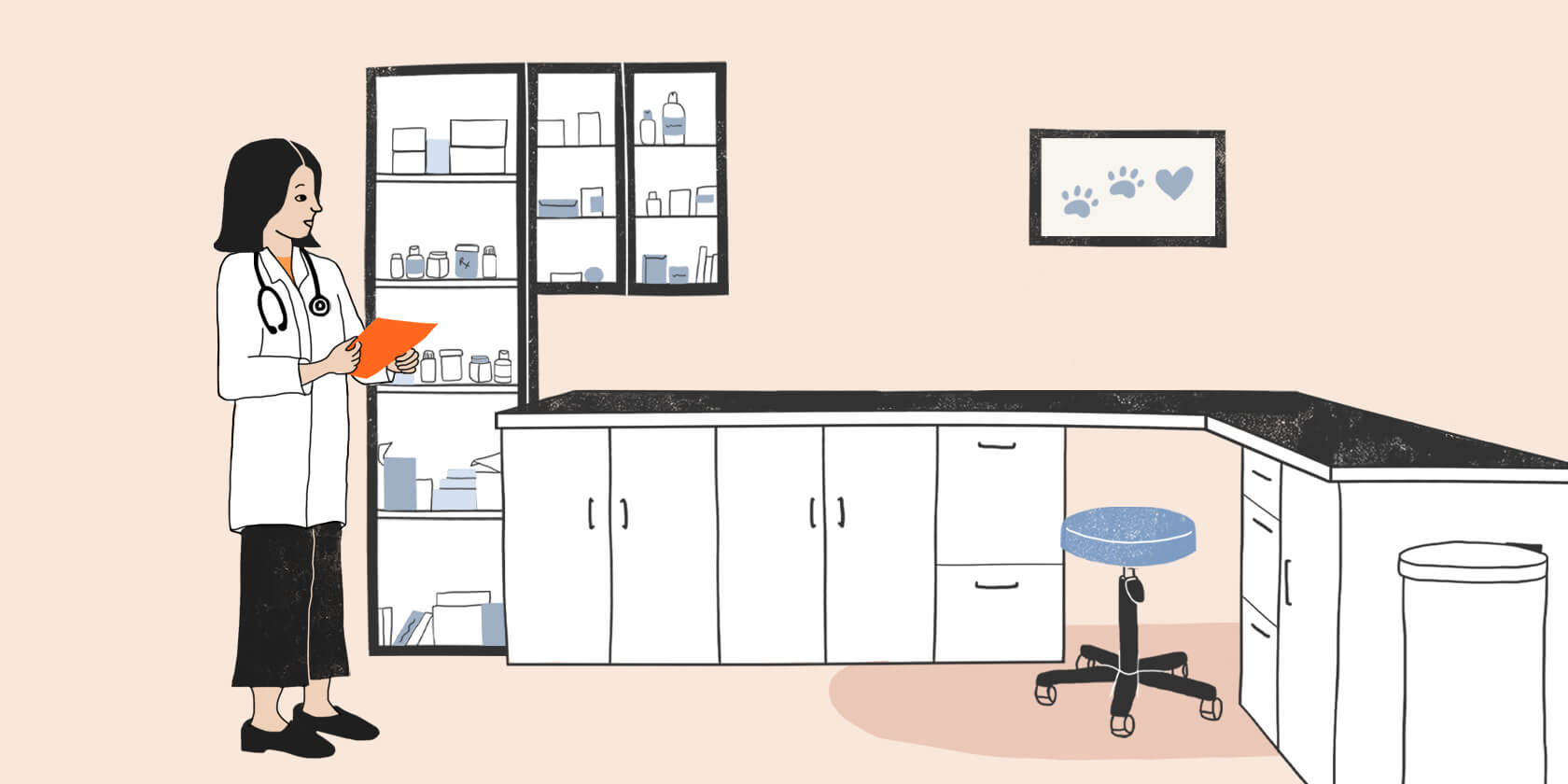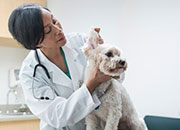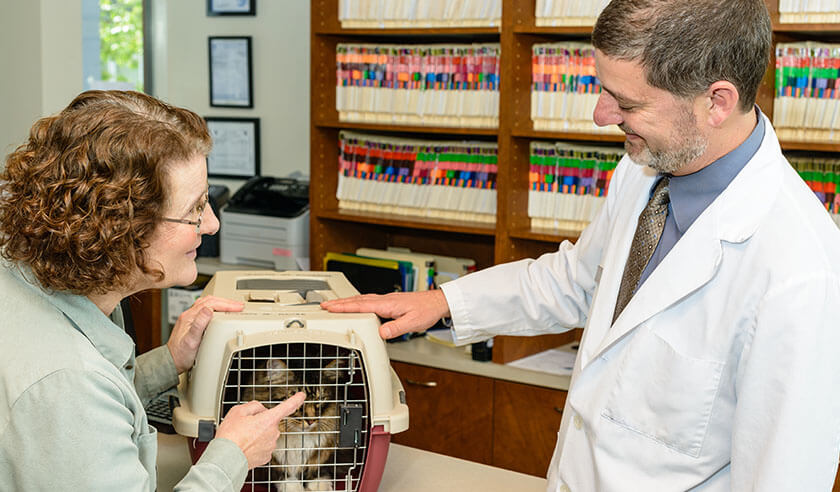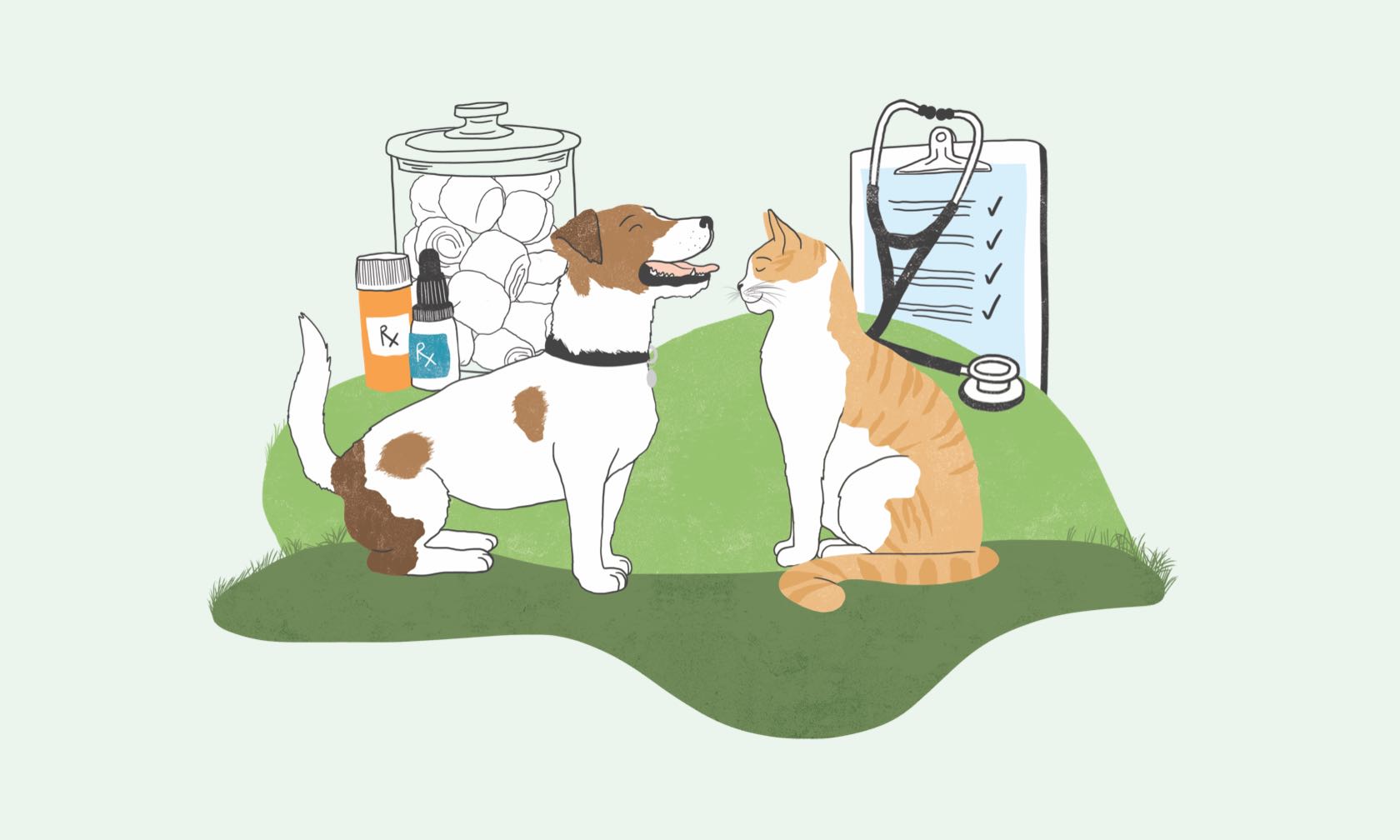Taking your pet to the veterinarian regularly is important to help them live a long and healthy life. Chances are if you’ve taken your cat or dog to a veterinary clinic, they’ve been taken to the “back room” for one reason or another. The back room might be mysterious, but it’s not scary! It’s the exact opposite.
The back room is where all the medical magic happens. It’s the workhorse of the practice and is often referred to as the treatment area by the veterinary team. Generally, this area is filled with everything the veterinarians and technicians need from medications to lab machines to extra people to provide loving distractions for your pet during treatment.

Why Does My Pet Get Taken to the Back Room?
There simply isn’t room for three people and the doctor and the equipment and the treatment (like vaccines, blood draw equipment, fluids, etc.) and the pet and owner all in one exam room! In most situations, your pet is taken to the back for additional equipment, team members, and extra space needed to give your pet their treatment.
The back room is also filled with more advanced medical equipment – like an x-ray and surgery suite, anesthesia machines, dental machine, and specialized tables and lights to help veterinarians get the best look at what’s going on with your pet.
Veterinary practices place a strong emphasis on minimizing stress in their patients. Having extra staff around to lend a hand allows treatment to be performed efficiently while your pet is offered treats, pets, and verbal comfort. Using this team approach, your veterinarian can provide high quality medical care while taking fear, anxiety, and stress out of your pet's experience.
During General Visits
During a general wellness visit, your veterinarian, veterinary technician, or another staff member may need to take your pet to the back for a variety of reasons. These are some of the most common:
- A more thorough physical exam
- Blood draw
- Heartworm test
- Urine and fecal sample collection
When Your Pet is Sick
If your pet is sick or is admitted to the veterinary hospital, they may be rushed to the back for diagnostics and treatment. Every pet’s diagnosis and treatment is unique, but these are some common procedures that happen in the back room:
- Diagnostic testing like blood tests, urinalysis, and fecal sample testing
- Medication administration, particularly if your pet requires oxygen or anesthesia immediately
- IV catheter placement and IV fluid and medication administration
- X-rays and other imaging like an ultrasound or endoscopy
For Surgical Procedures
If your cat or dog is at the veterinary hospital for surgery or a dental procedure, the veterinary staff will take them to the back, where everything from pre-op to post-op care happens, like:
- Pre-op examination and diagnostics
- Initial IV catheter placement, sedation, and intubation
- Anesthesia
- Surgery or dental procedures
- Post-op care
Why Can’t I Go Into the Back With My Pet?
When pet owners come to the back, many of these procedures listed above need to stop, or at least be altered, to protect you as an individual. Federal health and safety regulations prohibit non-employees from exposure to radiation, anesthesia, many medications, and any biologic samples that could contain zoonotic (transferrable to human) diseases. Many pets also seem to do better with their procedures without watching or worrying about their best friend (you!) in this new environment.
If you’re worried about your pet’s trip to the back room, it’s ok to ask for a tour. Many practices are fine with this (and even encourage it) but will schedule a time or timeframe so you’re not exposed to any hazards, disrupting another client’s visit with their sick pet, or in the area during an emergency.
What Is in the Back Room?
- Veterinary technicians and assistants. While you may see quite a few vet techs in the front area of the clinic, there may be some that work exclusively in the back. These technicians may assist with surgeries, analyzing tests that your pet had done, or supervise and care for animals that have just had surgery or are at the clinic for the supervision of a medical condition. Assistants may be running blood, fecal, and urine samples.
- Equipment. Everything from an anesthesia machine, dental x-rays, traditional x-ray machine, ultrasound, IV fluid pumps, examination tools, specialized lighting, and lab equipment lives in the back.
- Medications. Most practices keep their pharmacy in the back and have a specialized locked area for controlled substances and to keep pets and people safe.
- Surgical suite. This specialized operating room is often located near the treatment area so that the veterinary team can communicate about how things are going in surgery and so that staff can assist the surgical patient and veterinarian at a moment's notice if needed.
- Kennels and cat condos. If a pet needs to be hospitalized, it’s generally because they are sick and need regular medication and monitoring. Keeping them in the back in the treatment area (often separate from the non-medical boarding area) allows them to have constant attention from technicians and assistants.
Most veterinary hospitals closely resemble their human hospital counterparts. In fact, many of the machines and equipment are human-grade and interchangeable with our two-legged colleagues’ supplies. And veterinary teams are no different. Just as hospitals have doctors, nurses, CNA’s, LPNs, and support staff, veterinary teams have the same variations of people bustling behind the scenes to deliver top-notch healthcare to your pet. The front desk and exam room are just the tip of the iceberg – the real work, and the real care for your pet, starts in the back.
ZPC-00813R1







